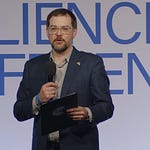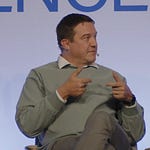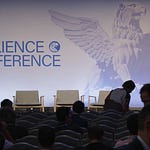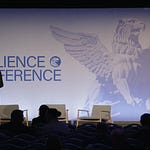Jorge Luis Borges once imagined a map so detailed it matched the territory one-to-one. Aechelon’s new initiative, Project Orbion, is trying something more audacious: a live, continuously updating, synthetic copy of Earth that emergency crews, pilots, and eventually civilians can use the way we use weather radar or traffic updates today. In other words, some of the biggest cartographers, VR experts, and satellite mappers have come together to create a twin of the globe.
The team plans to eventually offer the technology to general users, but right now it’s sending 3D data to the U.S. Coast Guard.
“There is enough technology now, together with Niantic Spatial and other partners, to capture the surroundings of the rescue area, even with an iPhone,” said CSO Javier Castellar in our extensive Resilience interview. “And then immediately send that data, process it with AI, and force it into the system that the pilots use to plan the mission that quickly.”
“Some of the technologies, especially space-based radar, is not like normal radar. It’s radar as space imaging. It’s able to see through clouds, through smoke, through canopy. So it’s able to rebuild from space pretty much any location on the world very quickly. And you can exploit that data and reconstruct the environment really quickly,” he said.
That sounds like science fiction. It isn’t. “This is real,” Castellar told us. The difference now is that many of the pieces once locked behind classified doors including high-refresh satellites, space-based radar, computer vision that can locate you without GPS, and display tech that shows true 3D without glasses, have spilled into the commercial world. Orbion is the effort to stitch those pieces together.
We’ve had “digital twins” before. These include static or slowly updated 3D models you can pan and zoom. Orbion’s pitch is speed. It aims to refresh the planet in near-real time using a mesh of commercial imagery providers, including Europe’s ICEYE and BlackSky, plus space-based radar that can see through clouds, smoke, and canopy. In a wildfire or hurricane, satellite radar can reconstruct the environment when optical cameras are blind.
On the ground, partners like Niantic Spatial can feed the twin with phone-captured video that turns into detailed 3D in minutes. Display partners such as Distance provide no-glasses, light-field windshields to visualize that data. Crucially, Niantic’s visual positioning techniques can pin location and orientation to centimeter-level accuracy with no GPS required.
Finally, Castellar addressed privacy for a system that allows for real-time global surveillance. His answer borrows from multilevel security in defense: invert the pyramid. What the military calls “Top Secret,” Orbeon treats as private by default; what’s accessible to a neighborhood, a city, or an agency depends on pre-adjudicated rules baked into the system. Every pixel and polygon carries a permission tag, and emergency declarations can temporarily lift curtains only within a bounded area. It’s not a policy panacea but it’s privacy as architecture, not an afterthought.
Our wide-ranging conversation about Orbion was fascinating and enlightening. And, most importantly, Orbion shows us the future of mapping tech and what it means to truly have a 1-to-1 digital version of the Earth.










